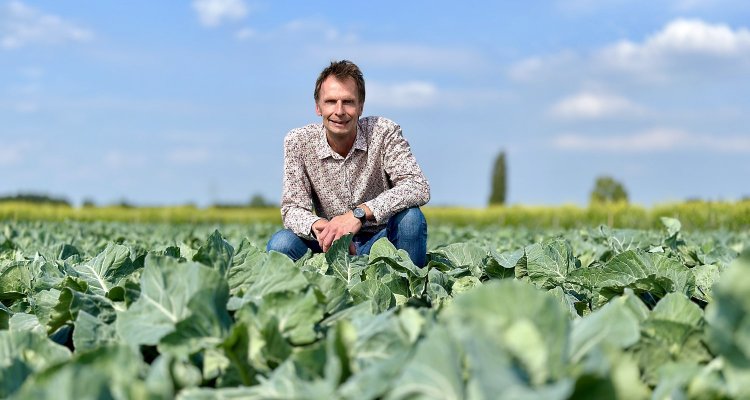
Heat changes branching in cauliflower
Cauliflower grows differently and slower in heat, creating a more open cauliflower. But which genes drive this process and how can we use the variation between different cauliflower varieties to develop heat-tolerant cauliflowers?
Have you ever looked for the parts of a flower in a cauliflower? Petals, pistils and stamens? Alas, they cannot be found in cauliflower. Whereas in broccoli we eat the undeveloped flower buds, in cauliflower the further development already stops at the early inflorescence stage. What does happen all the time during growth, however, is that new branching occurs for new inflorescences, which in turn develop into the cauliflower curd. Richard Immink, special professor at Molecular Biology, together with Guusje Bonnema, associate professor at Plant Breeding, is exploring how the plant controls this and how it can possibly be adjusted by selection on specific traits.

Cauliflower appears to be sensitive to heat. Explain.
'Cauliflower delays inflorescence initiation in heat. That makes it difficult to keep a constant supply of new cauliflowers. After a few hot days, they don't grow enough, and so you don't have fully grown cauliflowers by the planned harvest date. Then you go on planting out new plants and they do grow quickly, which suddenly results in too many cauliflowers coming onto the market at once.
In addition, you also get more stretching of the loose cauliflower inflorescences due to heat, creating a more open shape. It actually makes little difference to the quality of the cauliflower. You can still eat it just fine, but the European consumer is not used to it. I personally find that the stretched shapes are actually a bit easier to cut into the loose florets. But it sells harder and the market auction houses have strict agreements on what a cauliflower should look like.'
What variation is already known in cauliflower?
'For example, there are tropical cauliflowers, which keep growing well in the heat, but again cannot withstand the cold days in the Netherlands. Crossing tropical and temperate varieties did not yet bring the right solution. We have now been able to collect two hundred types of cauliflower, with differences in flowering styles and temperature sensitivity. These are beautiful differences to see, with wonderful names and descriptions such as hairiness, riciness, and fluffy-like.'
So there are numerous cauliflowers in your trial fields now?
'Indeed, we conduct these trials in the field, at multiple locations, in collaboration with breeding companies. We see that a cauliflower in a greenhouse does look quite different from one in the field. That means the fingers are now crossed as to whether we get any period in this season when it is hot enough to see the differences in heat stress in cauliflower. We always sow in phases to increase the chances of observing heat effects at different times during the plant's growth. Meanwhile, we measure variables such as temperature on site and describe what the cauliflowers look like in the field. Together with other researchers, bioinformaticians and breeding companies, we thus figure out which genes drive the flowering process. This will hopefully allow us to get good-quality heat-tolerant cauliflowers in the future through targeted breeding.'
How long will it be before heat-tolerant cauliflowers are in the shops?
'Hard to say, because cauliflower breeding is really tricky. For example, when it is very hot, the high temperature not only affects the timing of inflorescence induction and stem elongation, but also has an impact on many other properties of a cauliflower. Moreover, in the Netherlands we also have cold periods that the plants have to be able to withstand. In addition, there appear to be relatively large differences between the chromosomes of different cauliflower cultivars. It makes breeding on heat-resistant cauliflowers more challenging than we first thought."